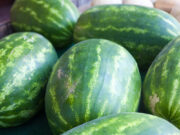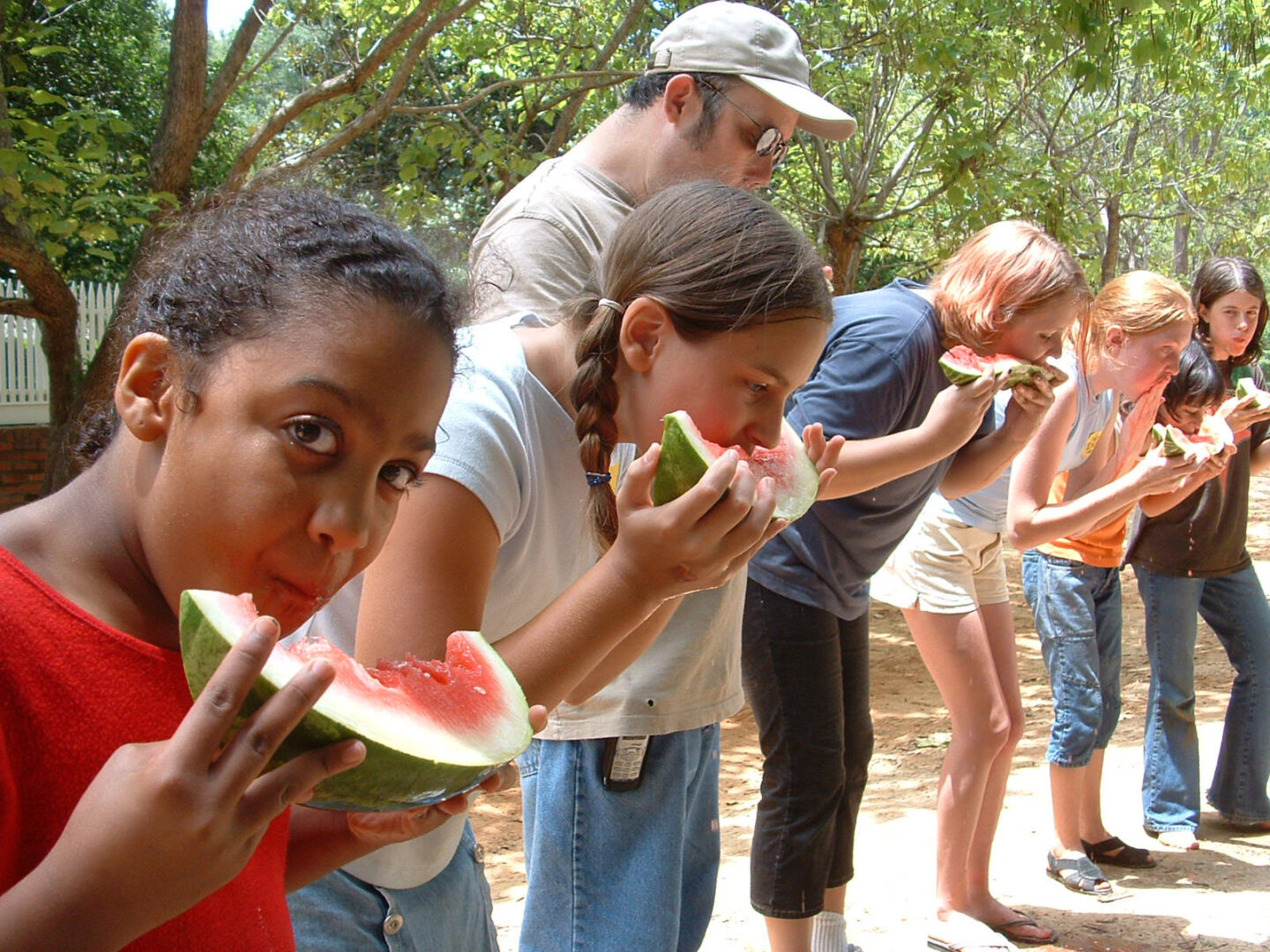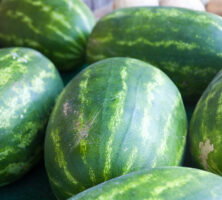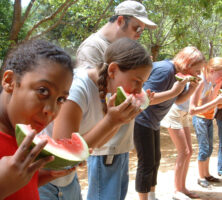Georgia ranks third in the United States in acreage of watermelons (Citrullus lanatus). Yearly production of watermelons in Georgia ranges from 24,000 to 36,000 acres. Other melons, primarily cantaloupe (Cucumis melo), account for an additional 3,500 to 6,800 acres. Melons collectively contribute $26-$57 million in farm gate value (the value of the commodity when it leaves the farm) to the state’s economy each year.
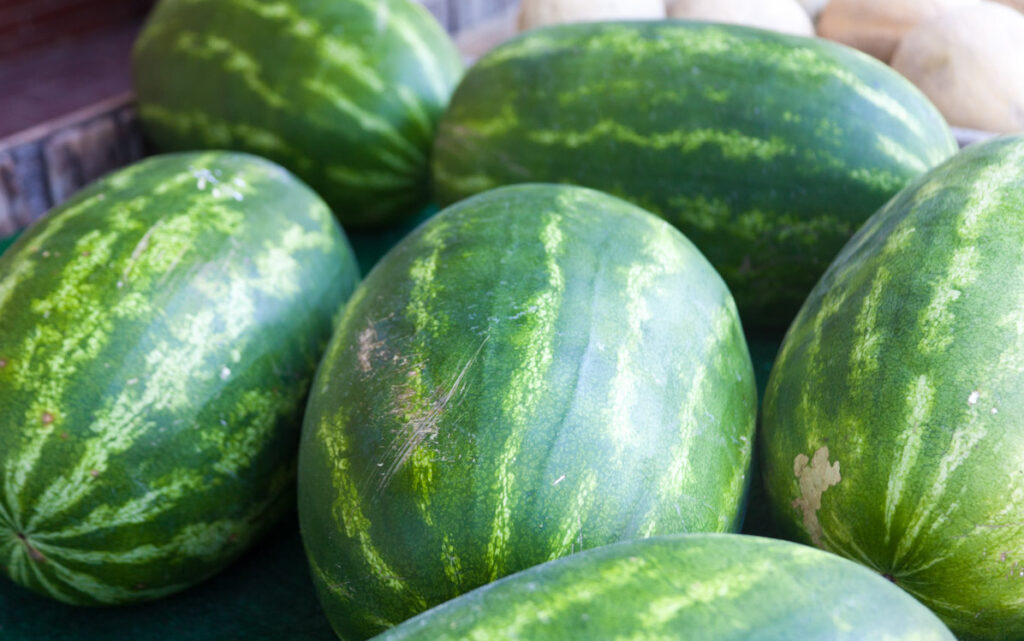
Image from Kevin Trotman
Most melons are produced in the southern half of the state as a spring/summer crop and require 85 to 110 days to mature. Only a handful of melons are produced in the fall and then only in southern Georgia. The peak harvest season is from late May through mid-July. Although Georgia-grown melons are available locally throughout the season, the majority of the state’s melons are exported to northern states and Canada. Cordele, in Crisp County, has the largest melon market in the state and is considered the heart of the Georgia watermelon industry.
Georgia producers primarily grow the Allsweet, Crimson Sweet, and Jubilee varieties of watermelon and the western shipper type of cantaloupe (western shippers are medium-sized to small melons with shallow or no ribbing and light to coarse netting). An increasing portion (still less than 50 percent) of the watermelon acreage has been shifted to the production of seedless melons. Although these melons contain some seed coats, they are generally free of the hard seed usually associated with watermelons.
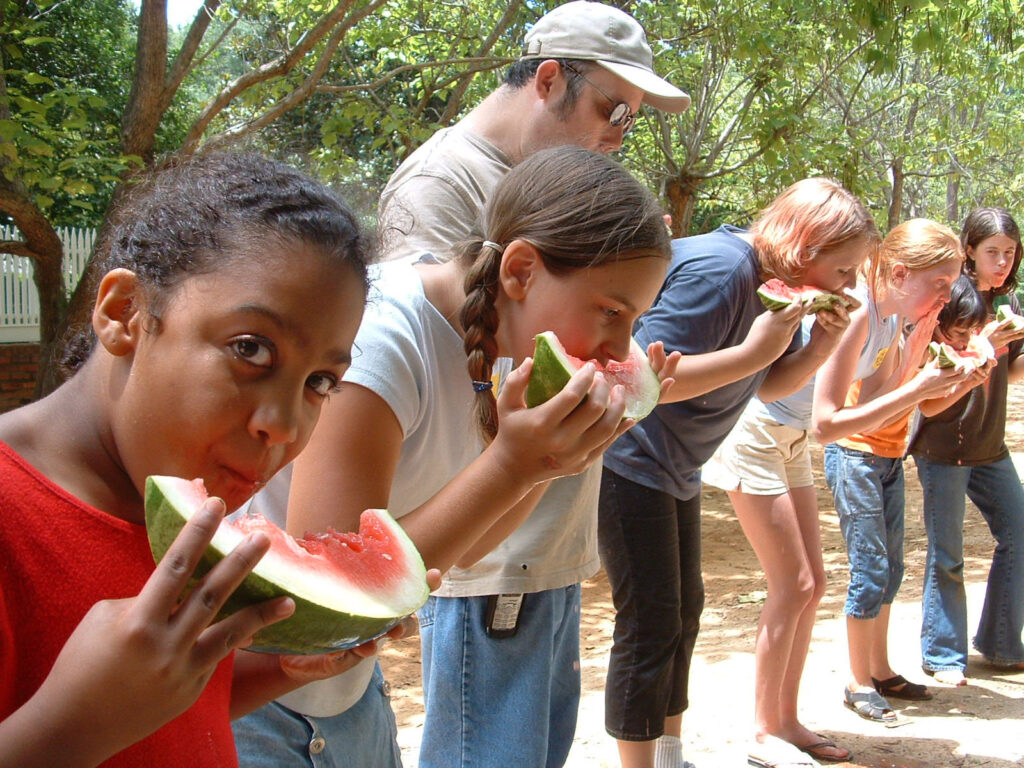
Courtesy of Matthew M. Moye
The use of improved hybrid varieties, in combination with plastic mulches and irrigation, has allowed Georgia growers to produce greater yields and to harvest earlier. Average yield of watermelons in the state is around 35,000 pounds per acre, although yields of more than 50,000 pounds are not uncommon.
Watermelons originated from the Kalahari Desert in southern Africa. Every part of the watermelon is edible, including the rind, which is used to make pickles, and the seeds, which are often baked. Although watermelons are 92 percent water, they are rich sources of vitamins A and C.


